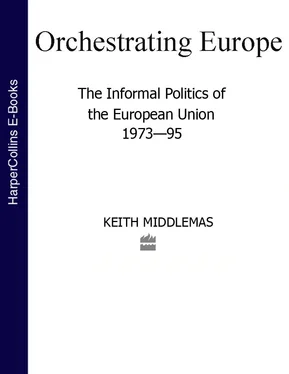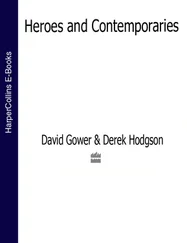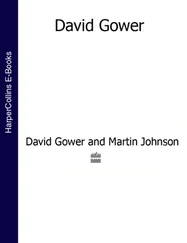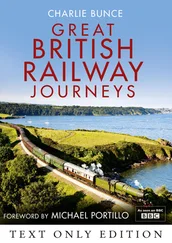It is hard to judge the immediate economic impact of the ECSC. The overnight removal of trade controls, without the transitional periods common to most European agreements, was certainly a success. However, for coal and steel, traditional barriers were less important as regulators of trade than they had been in the past or than they were for other sectors of the economy. The coal trade was covered by international agreements in which tariffs did not really play a role; Italy, with a rate of 15%, was something of an exception. For steel, both France and Germany had already suspended tariffs before the treaty was signed and the Benelux tariff had long been fairly low. Again, only in Italy, where an ad valorem tariff of 11–23% had been levied (and which was allowed to remain intact over a transition period) did tariffs have a protectionist intent.
More important was the impact of the ECSC on pricing. The ECSC eliminated the practice of dual pricing and created a base-point pricing system. Although price controls and subsidies were not fully abolished, even small progress on this front eased trade. Moreover, the discriminatory transport-pricing policies of ECSC members were eliminated. By volume, coal and steel were among the most important traded goods, so reduction of cross-border rates of about 30% made a major impact in deregulating transportation. The opening of the coal and steel trade also expanded imports of steel products into France and the Saar, which jumped from 27,700 tons in 1952 to 117,600 in 1953 – a period of low demand with trade barriers in effect for the first few months. In fact, throughout the 1950s, total intra-community trade grew much faster than production or trade with non-members; intra-ECSC trade in treaty products increased 171% from 1952–7, while production increased only 43% and extra-ECSC trade only 51%. In addition to these concrete effects, the ECSC defined the pace and structure of the debate over future initiatives undertaken by the Six. The next initiative took place in the area of defence and security policy.
Although they were soon to be overshadowed by the Cold War with the Soviet Union and its satellites, it is important to remember that security and defence policies had initially focused on the need to inhibit future German aggression. The Treaty of Dunkirk, signed in March 1947, was a long-term Franco-British alliance directed against Germany. When the Brussels Pact was signed a year later and the Benelux countries joined the alliance, they modified its exclusive orientation against Germany by a commitment to ward off aggression from whatever source. 20In the intervening twelve months, the announcement of the Truman Doctrine had highlighted a more immediate and dangerous threat to peace and security from the Soviet Union in the east. Yet the fact remained that had the Soviets invaded, the new alliances were ill-placed to stand in their way. Some have even argued that their very frailty was intended to demonstrate the necessity for American troops and equipment, backed by nuclear weapons if necessary, to be committed to Europe’s defence. Indeed, the secret so-called ‘Pentagon Talks’, which embraced the USA and Canada, started soon afterwards. These discussions came into the open in the summer of 1948 and were widened in their scope, culminating in April 1949 with the signature of the Atlantic Pact, forming the North Atlantic Treaty Organisation (NATO). 21
American strategic planning in this period recognized that it would be impossible, even with US troops already on the ground, to defend Europe from Soviet aggression. In the event of an attack, the best scenario was a withdrawal behind the Pyrenees to Spain and across the Channel to the United Kingdom, from which points the reconquest of Europe could begin. A defence line at the Rhine or the Alps was not considered to be plausible before 1957 at the earliest. The only way to bring that date forward was to increase the European defence effort, and to employ the latent military strength of West Germany. Two events accelerated thinking in this direction: the victory of the Communists in China and, more importantly, the loss of the nuclear monopoly signified by the detection of the first Soviet atomic test in autumn 1949. These plans were made public in the crisis atmosphere surrounding the Communist invasion of South Korea which triggered the start of the Korean War. In September 1950, Acheson demanded the rearming of West Germany within NATO whilst pledging both an increase in the number of US troops stationed in Europe, and assistance for an arms buildup elsewhere.
The European reaction to events in eastern Asia was rather more sanguine than that in the USA, and few really saw any link between the Korean war and an increased threat to security in Europe. Given the fact that the rise in raw material prices which had accompanied the outbreak of war had undermined ECSC members’ balance-of-payments positions and weakened their recoveries, they were reluctant to undermine progress further by increasing defence budgets. Still less did they see any immediate necessity for German rearmament. In France especially, this reaction was acute. If the idea of facing a resurgent German industry had filled French policy-makers with dismay, their alarm at the prospect of a reconstituted German army was even greater. Since much of the French army was involved in Indo-China, Germany would soon have the largest army in western Europe.
Within the French planning ministry, an alternative strategy was hurriedly put together. If supranationality had provided a vehicle for controlling German industry, could it not serve to control its rearmament as well? In October 1950, the prime minister René Pleven announced that France would accept German rearmament only in the context of a European army, under the control of a single minister of defence. Initially, the Americans were horrified at the delay to the formation of German divisions that acceptance of the French proposals would imply. Although talks on the Pleven Plan started in February 1951, parallel efforts continued to find a formula for the integration of the German army into NATO. When these failed, in summer 1951, the US not only tolerated the French scheme but became an enthusiastic advocate. A European Defence Community (EDC) would become the agent for carrying forward the process of integration in Europe. 22
At this point, only five of the six ECSC countries were involved as full participants in the negotiations. After the switch in the American position, the Netherlands finally joined too, its change of heart prompted by a fear of losing American cash and goodwill and the hope of securing a defensive line (the Rhine-Ijssel line) that would not abandon most of the country to advancing Soviet forces. In May 1952, the treaty establishing the EDC was signed in Paris. It was not particularly elegant in design, nor particularly egalitarian in intent. To neutralize the danger of independent German military adventure, the army was to be made up of national units of battalion size only. Having thus fragmented German military capacity, the French then went on to remove their own colonial armed forces from Community control. By defining Germany as a potential war zone, the treaty also proscribed the manufacture of certain war equipment on German soil. Despite the modifications made during the negotiations, the EDC did not make much military sense. Nor did it much appeal to the other members of the Six. But the treaty’s greatest failure lay in its primary task of making German remilitarization acceptable to French public opinion. Successive French governments shrank from presenting the treaty to parliament for ratification and when they eventually did so, in August 1954, it was rejected.
The EDC is an interesting example of the limits of American hegemonic leadership. American pressure was instrumental in securing a higher priority for European defence spending and for obtaining recognition that German troops were necessary. Yet, ultimately, the American administration had to defer to the French political agenda. Moreover, having done so, they failed to secure French acceptance of its own government’s creation, despite the fact that Europe’s defence was impossible without the USA. Certainly, this point was repeatedly made and never more clearly than when secretary of state John Foster Dulles threatened an ‘agonizing reappraisal’ of the American defence commitments to Europe if the issue were not resolved quickly. Moreover, French security objectives in their colonies were utterly dependent on US assistance. From 1950 to the fall of Dien Bien Phu, the United States covered 70% of the costs of France’s colonial war in Indo-China.
Читать дальше









![Brian Thompson - A Monkey Among Crocodiles - The Life, Loves and Lawsuits of Mrs Georgina Weldon – a disastrous Victorian [Text only]](/books/704922/brian-thompson-a-monkey-among-crocodiles-the-life-thumb.webp)


